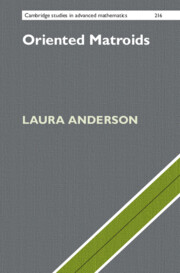Refine search
Actions for selected content:
48569 results in Computer Science
Appendix A - Graphs and Search
- from Appendices
-
- Book:
- Acting, Planning, and Learning
- Published online:
- 19 May 2025
- Print publication:
- 05 June 2025, pp 561-565
-
- Chapter
- Export citation
Part II - Hierarchical Task Networks
-
- Book:
- Acting, Planning, and Learning
- Published online:
- 19 May 2025
- Print publication:
- 05 June 2025, pp 95-96
-
- Chapter
- Export citation
6 - Acting with HTNs
- from Part II - Hierarchical Task Networks
-
- Book:
- Acting, Planning, and Learning
- Published online:
- 19 May 2025
- Print publication:
- 05 June 2025, pp 123-131
-
- Chapter
- Export citation
Notes
-
- Book:
- Ethnography of an Interface
- Published online:
- 18 May 2025
- Print publication:
- 05 June 2025, pp 190-196
-
- Chapter
- Export citation
16 - Learning Hierarchical Refinement Models
- from Part V - Hierarchical Refinement Models
-
- Book:
- Acting, Planning, and Learning
- Published online:
- 19 May 2025
- Print publication:
- 05 June 2025, pp 380-388
-
- Chapter
- Export citation

Oriented Matroids
-
- Published online:
- 04 June 2025
- Print publication:
- 10 April 2025
Classification-informed estimation: the role of water-type clustering to improve neural network generalization for salinity and temperature estimation in coastal waters
-
- Journal:
- Environmental Data Science / Volume 4 / 2025
- Published online by Cambridge University Press:
- 04 June 2025, e32
-
- Article
-
- You have access
- Open access
- HTML
- Export citation
SETup automotive: a Method for Systems Engineering Transformation in automotive industry
-
- Journal:
- Design Science / Volume 11 / 2025
- Published online by Cambridge University Press:
- 04 June 2025, e16
-
- Article
-
- You have access
- Open access
- HTML
- Export citation
Navigating migration, memory and media: Introduction to the collection
- Part of
-
- Journal:
- Memory, Mind & Media / Volume 4 / 2025
- Published online by Cambridge University Press:
- 03 June 2025, e5
-
- Article
-
- You have access
- Open access
- HTML
- Export citation
ROB volume 43 issue 3 Cover and Front matter
-
- Article
-
- You have access
- Export citation
Does the emotional framing of narratives influence attitudes? Evidence from second-hand testimonies on WWII collaboration and repression
- Part of
-
- Journal:
- Memory, Mind & Media / Volume 4 / 2025
- Published online by Cambridge University Press:
- 03 June 2025, e6
-
- Article
-
- You have access
- Open access
- HTML
- Export citation
Facing the ambiguities of participation in data-driven projects: a systematic literature review
-
- Journal:
- Data & Policy / Volume 7 / 2025
- Published online by Cambridge University Press:
- 03 June 2025, e41
-
- Article
-
- You have access
- Open access
- HTML
- Export citation
Recurring spoken term discovery in the zero-resource constraint using diagonal patterns
-
- Journal:
- Data-Centric Engineering / Volume 6 / 2025
- Published online by Cambridge University Press:
- 02 June 2025, e28
-
- Article
-
- You have access
- Open access
- HTML
- Export citation
Toward HydroLLM: a benchmark dataset for hydrology-specific knowledge assessment for large language models
-
- Journal:
- Environmental Data Science / Volume 4 / 2025
- Published online by Cambridge University Press:
- 02 June 2025, e31
-
- Article
-
- You have access
- Open access
- HTML
- Export citation
PROOF MINING AND THE CONVEX FEASIBILITY PROBLEM: THE CURIOUS CASE OF DYKSTRA’S ALGORITHM
- Part of
-
- Journal:
- The Review of Symbolic Logic / Volume 18 / Issue 3 / September 2025
- Published online by Cambridge University Press:
- 02 June 2025, pp. 775-811
- Print publication:
- September 2025
-
- Article
-
- You have access
- Open access
- HTML
- Export citation
Existential Notation3 Logic
-
- Journal:
- Theory and Practice of Logic Programming / Volume 25 / Issue 3 / May 2025
- Published online by Cambridge University Press:
- 02 June 2025, pp. 304-339
-
- Article
-
- You have access
- Open access
- HTML
- Export citation
